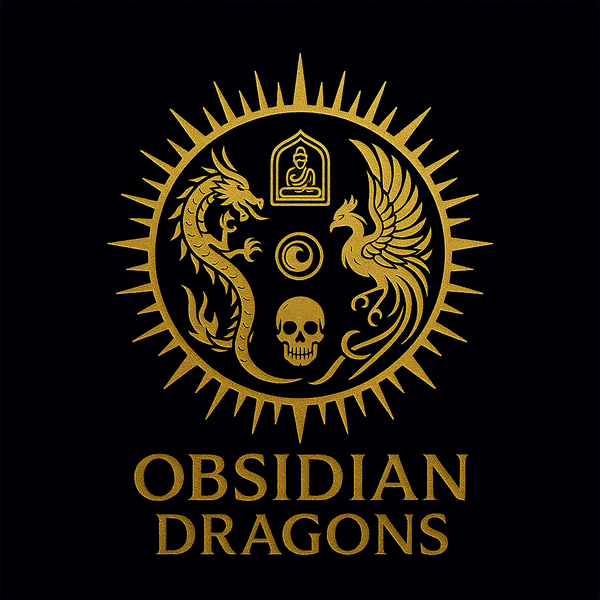obsidian dragons
Bronze statuette of Yamantaka - Tibetan Yab yum
Bronze statuette of Yamantaka - Tibetan Yab yum
Couldn't load pickup availability
Rare and exceptional bronze Yamantaka statuette - Tibetan yab yum of Tantric Buddhism representing Yamantaka in his Vajrabhairava form, Adamantine Terror.
Dimensions of this bronze statuette of Yamantaka: 32 cm high by 24 cm wide by 13 cm deep.
Weight 6,300kg
Large and voluminous room.
Traditionally, a lid is located at the bottom, at the base of the Buddhist statue, in order to place offerings, prayers, mantra, during the ceremony called "opening of the eyes" making the statuette invested with the power of the deity represented.
Who is Yamantaka?

Yamantaka is an important deity in Tantric Buddhism, revered as the " destroyer of death ". This deity is a wrathful manifestation of Manjushri, the bodhisattva of wisdom, and is central to Vajrayana Buddhism. Yamantaka represents the transcendence of death and the attainment of enlightenment.
For detailed and in-depth explanations on Yamantaka, I invite you to consult my article dedicated to this yidam on my blog dedicated to Buddhist cultures by clicking on this link
This tantric Buddhist statue was handcrafted by Tibetan bronze workers, specialized in the making of statues and ritual objects intended for Vajrayana Buddhist temples. In northern Yunnan in the Gyalthang region, a Tibetan region nestled at an altitude of 4000 meters This bronze Vajrakilaya statue is an exceptional treasure of Buddhist art
-
-

What specific materials was this bronze Yamantaka Statuette made from?
The bronze used is called purple bronze . It is a high-quality bronze, getting its characteristic color from a high aluminum and copper content. This composition gives it a distinct violet or purple hue. This type of bronze is often used in the manufacture of decorative objects, sculptures and art pieces because of its unique color and aesthetic properties. Its use dates back to antiquity, but it is still appreciated today for its beauty and durability.
-
This statuette represents Yamantaka in the yab yum posture with his consort, his mystical wife Vetalî.
-
This form of Yamantaka is one of the principal deities of the ancient and recent father tantras, particularly venerated in the Sakya and Gelugpa schools.
This form is complex, with nine heads, thirty-four arms and sixteen legs. Topped with the peaceful yellow head of Manjushri, an angry red head emerges from the central head of the blue-black buffalo. On the right are three faces - yellow, blue and red - and on the left are three more - dark red, white and dark green.
Its massive blue-black body is adorned with a garland of fifty skulls and bone ornaments. Its multiple arms are laden with attributes: cleaver, phurba, peacock feathers, pestle, razor, spear, hatchet, javelin, arrow, iron hook, skull staff, khatvanka, cogwheel, vajra, hammer, sword, damaru and elephant skin on the right; and skull cup filled with blood, fourfold head of Brahma, shield, foot, lace, bow, entrails, bell, arm, piece of shroud, impaled man, dharmodaya (triangular box), skull cup, mudra of threat, trident, banner and elephant skin on the left.
Its sixteen feet trample animals and figures, each carrying its own meaning. On the right, a man, a buffalo, an elephant, a donkey, a camel, a dog, a sheep, a fox, under which are the gods Brahma, Indra, Rahula and Rudra. On the left, a vulture, an owl, a crow, a parrot, a falcon, a heron, a rooster and a swan, under which are Kumara, Ganesh, the sun and the moon.
Yamantaka is united with his mystical wife Vajra Vetalî blue and sits enthroned on a lotus with a sun cushion, surrounded by a terrible blaze.
Each attribute, each detail of this form is charged with a precise meaning:
- Nine heads : Represent the ability to perceive the nine basic emotions simultaneously, as well as the transcendence of these emotions to achieve a state of equanimity.
- Thirty-four arms : Symbol of omniscience and the ability to perform many beneficial actions simultaneously.
- Sixteen legs : Represent stability in all situations, as well as the ability to move quickly to rescue beings.
- Yellow head of Manjushri : Represents transcendent wisdom and ultimate knowledge.
- Irritated red head emerging from the central head of the blue-black buffalo : Symbolizes righteous, controlled anger, used to destroy ignorance and obstacles to awakening.
- Three faces on the right (yellow, blue and red) : Represent the three bodies of the Buddha (reality body, enjoyment body, emanation body) and the three poisons of the mind (ignorance, desire, aversion).
- Three faces on the left (dark red, white and dark green) : Symbolize the three benevolent activities of body, speech and mind for the benefit of all beings.
- Garland of Fifty Skulls and Bone Ornaments : Evokes the transcendence of the fear of death and the realization of the emptiness of all phenomenal form.
- Multiple arms on the right : Carry various attributes that represent the destruction of negative forces and the establishment of enlightenment, as well as the protection of practitioners.
- Multiple arms on the left : Represent the offering of blessings and benefits to practitioners, as well as the purification of negative emotions.
- Feet trampling animals and people : Symbolize domination over negative forces and obstacles, as well as protection of practitioners.
- Union with blue Vajra Vetalî : Represents the unity of transcendent wisdom (Vajra) with primordial energy (Vetalî), leading to complete awakening.
- Throne on a lotus with sun cushion : Evokes purity and transcendence of all dualities.
- Surrounded by a terrible blaze : Symbol of purification of disturbing emotions and obstacles to awakening.
Share
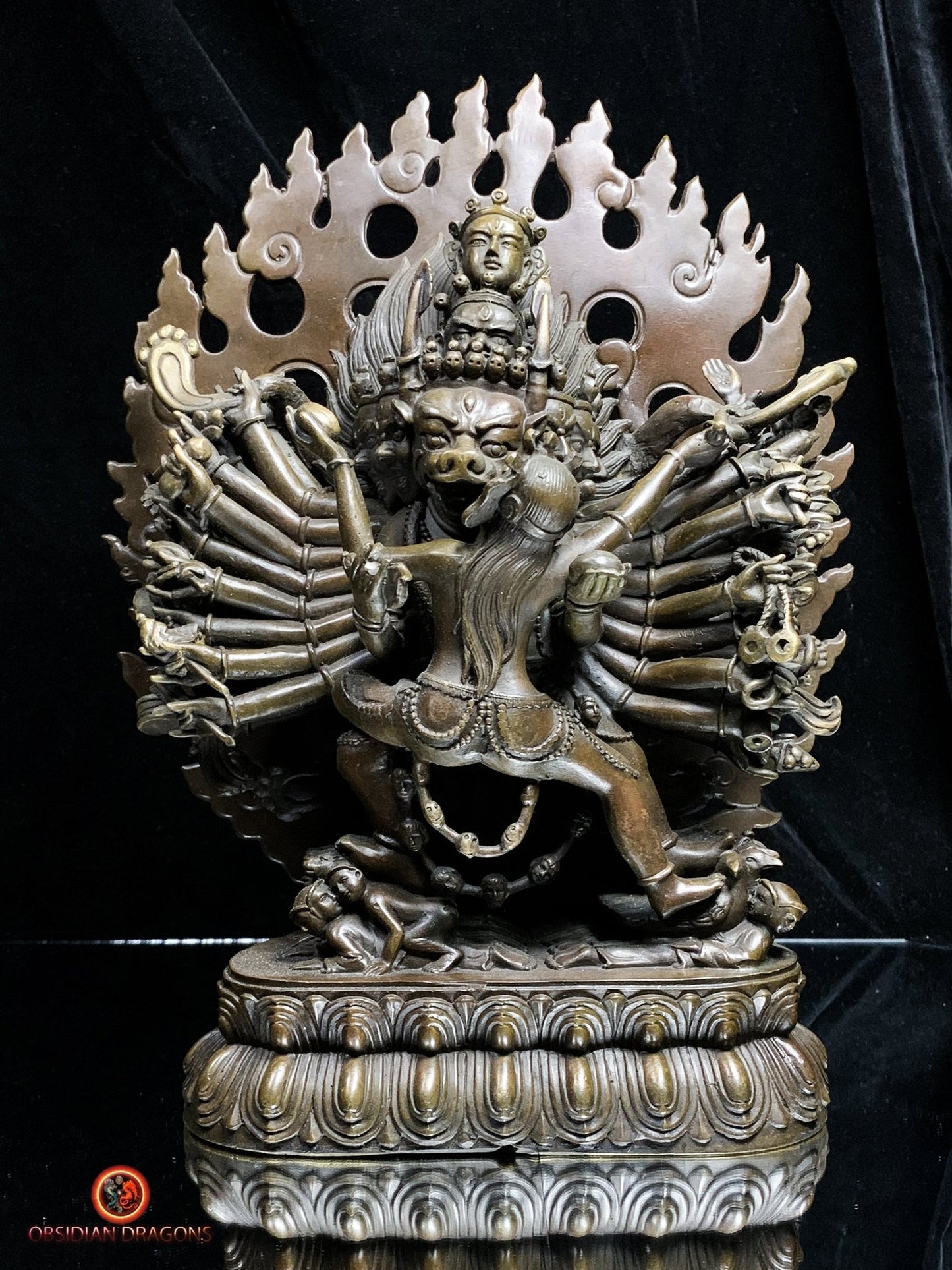
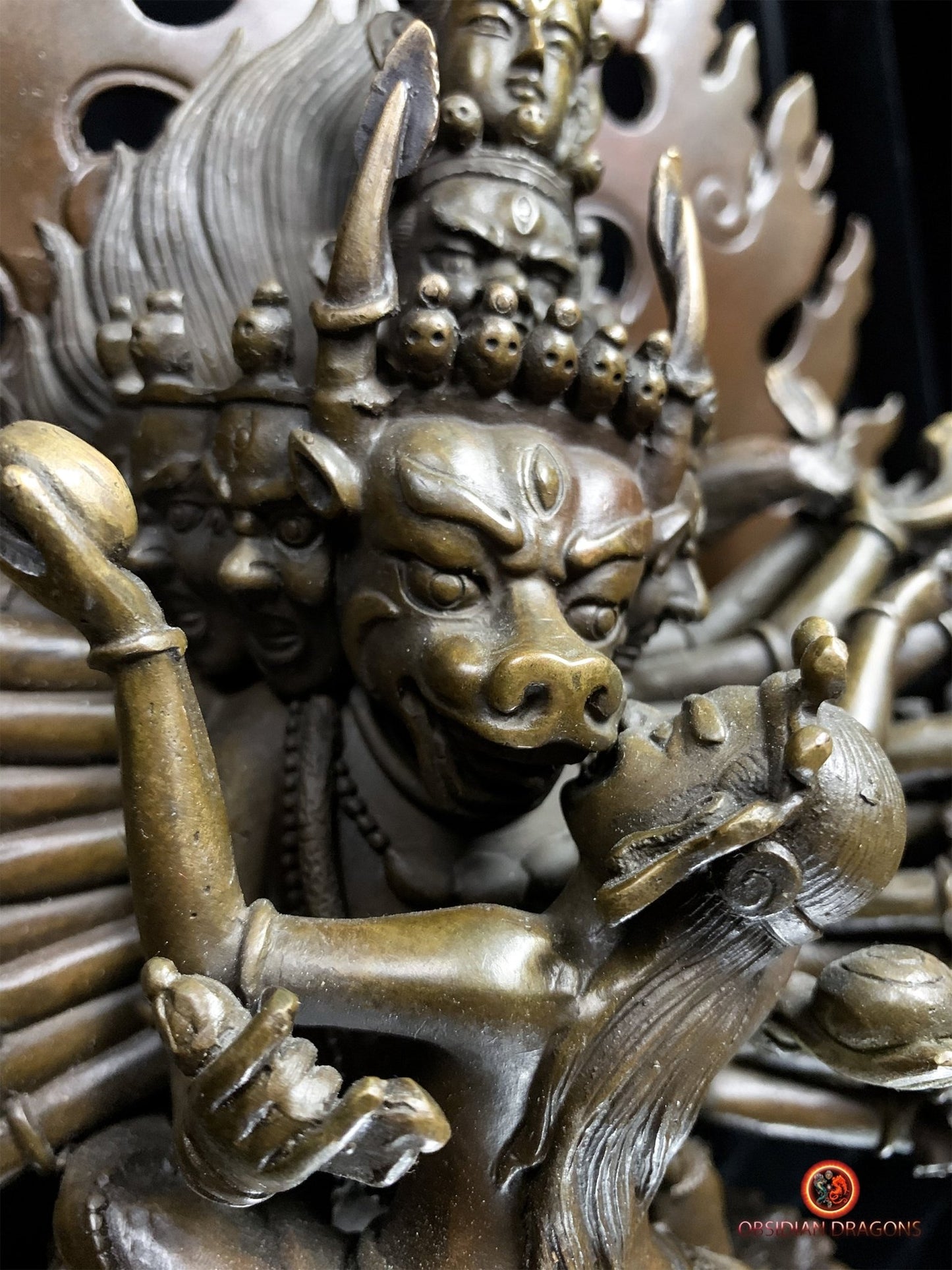
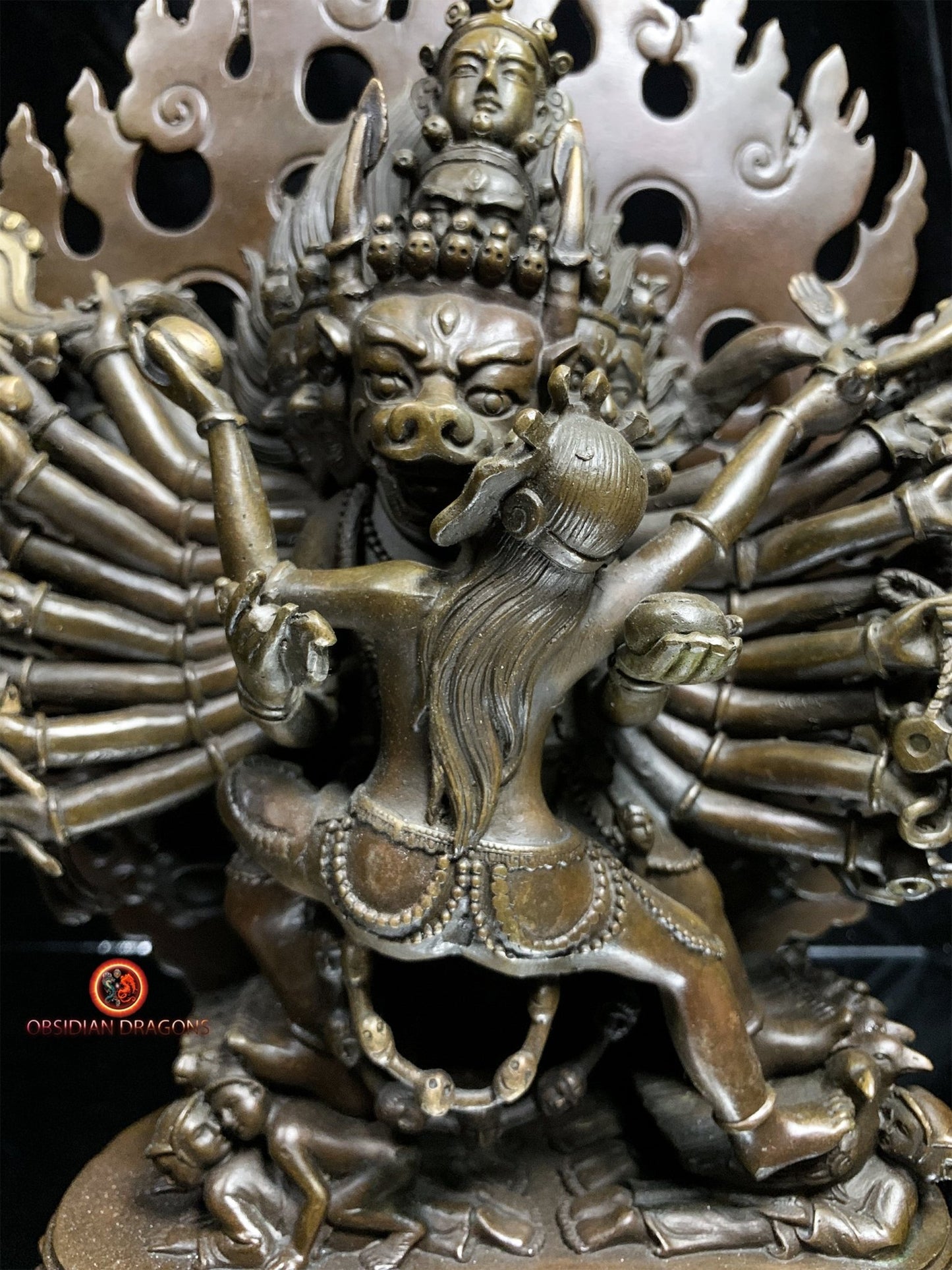
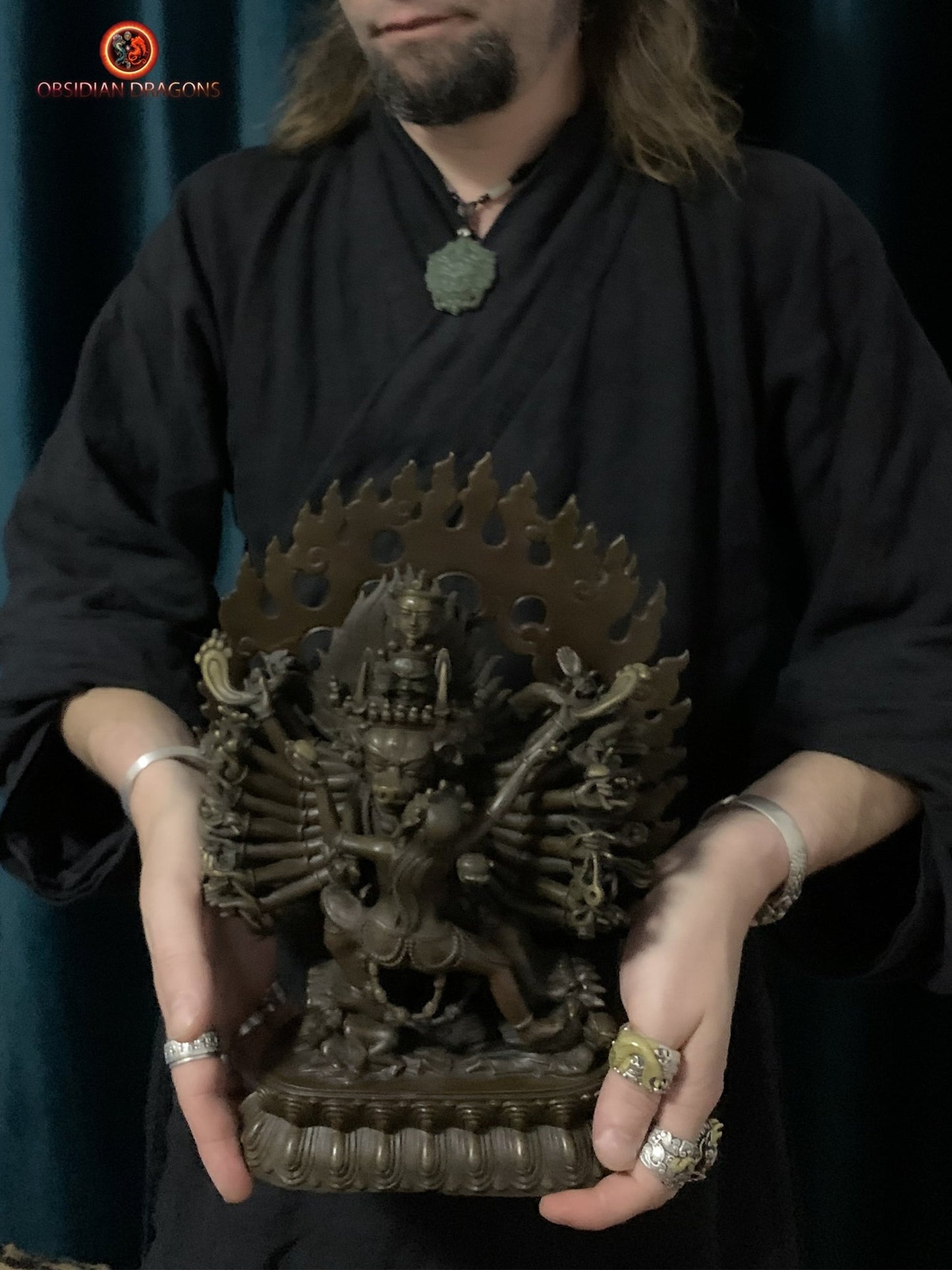

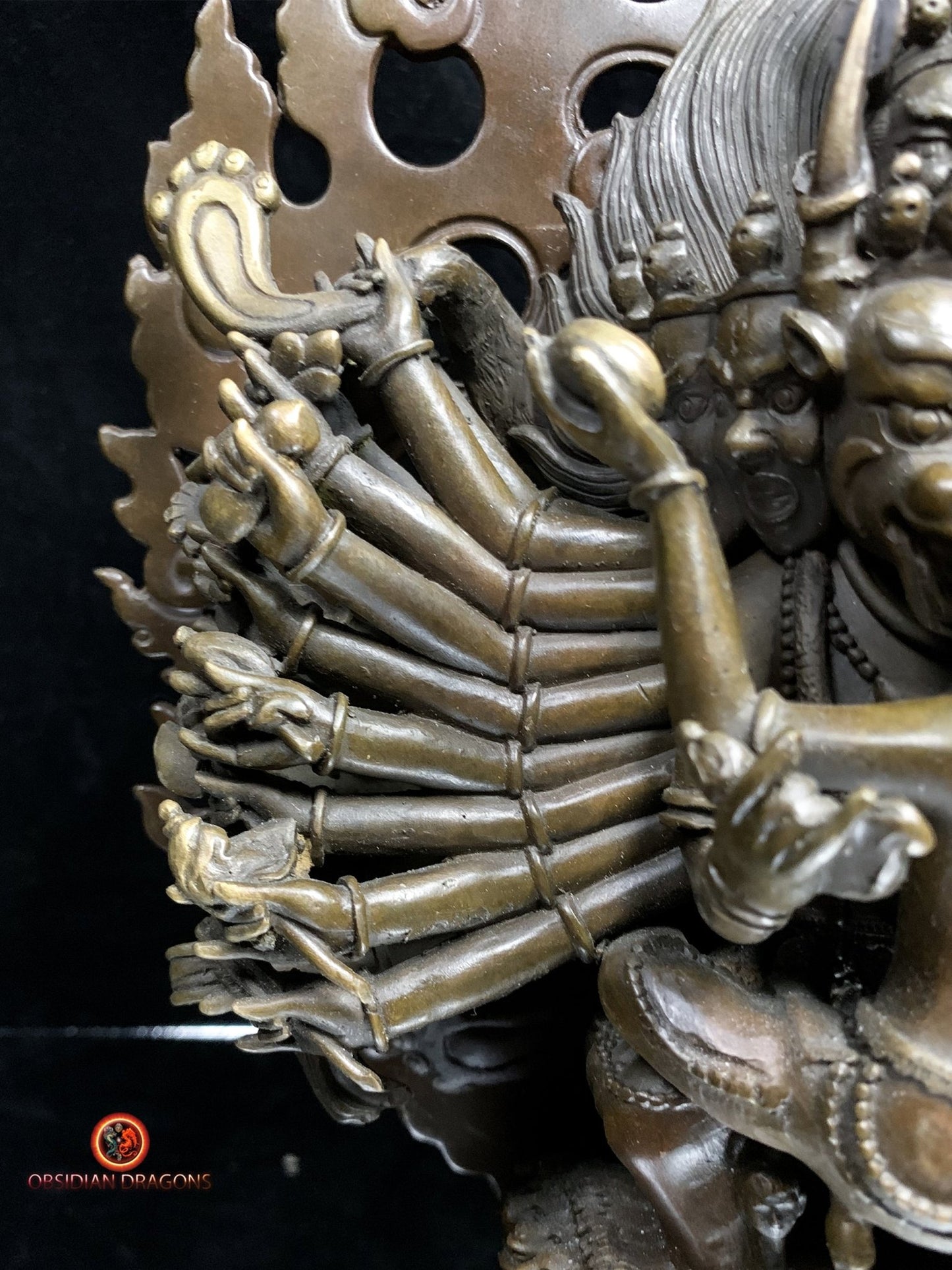
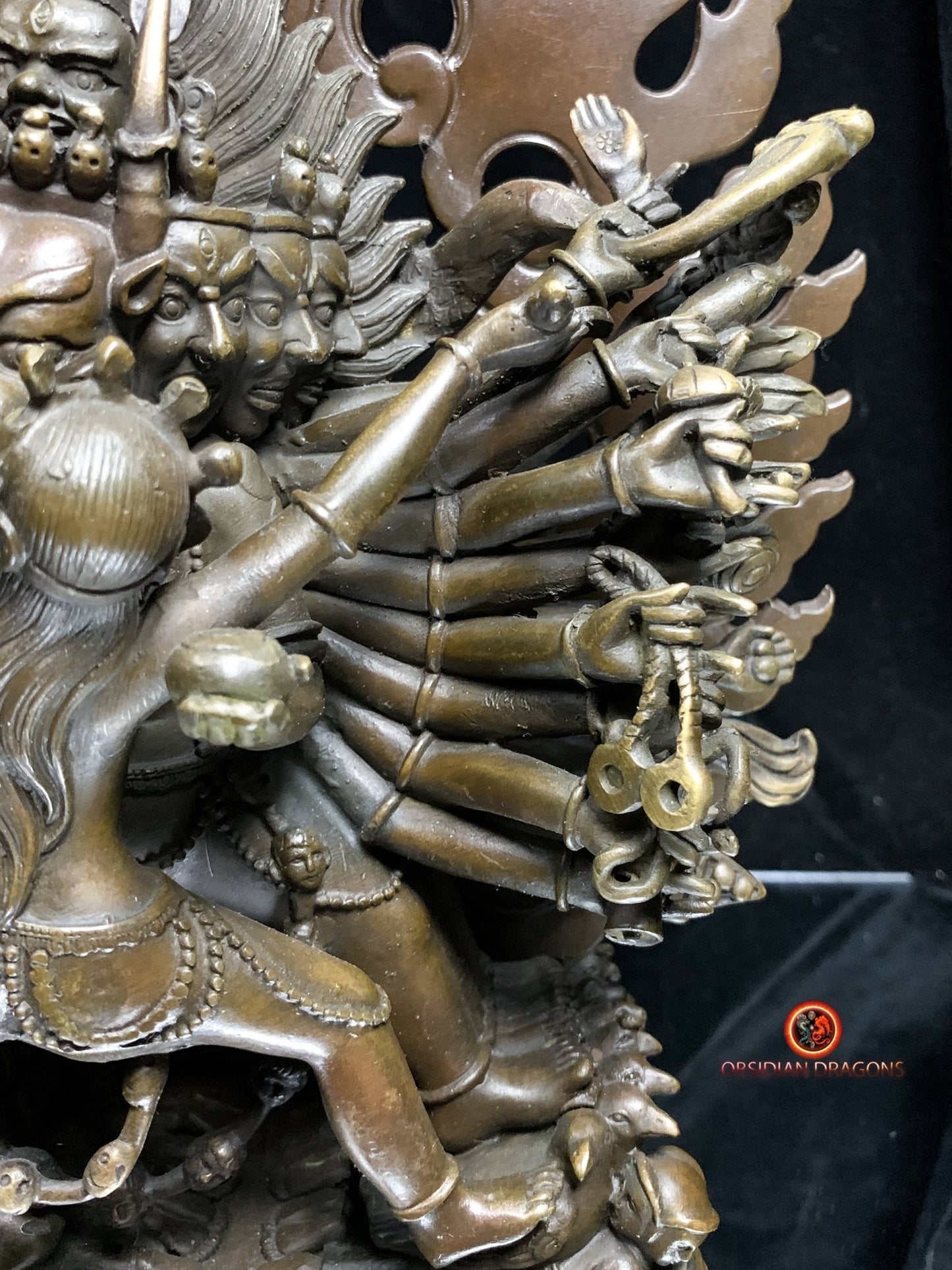
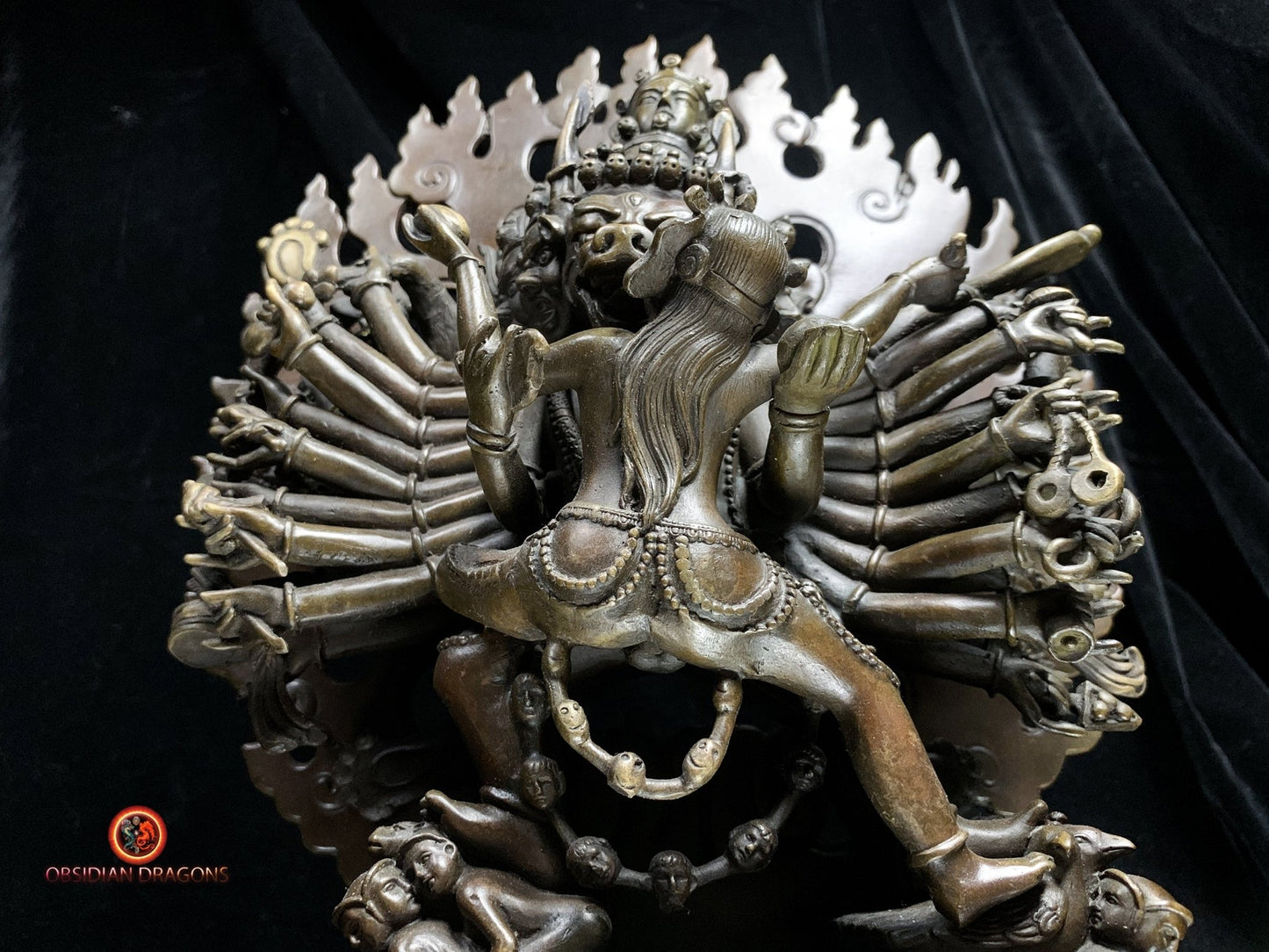
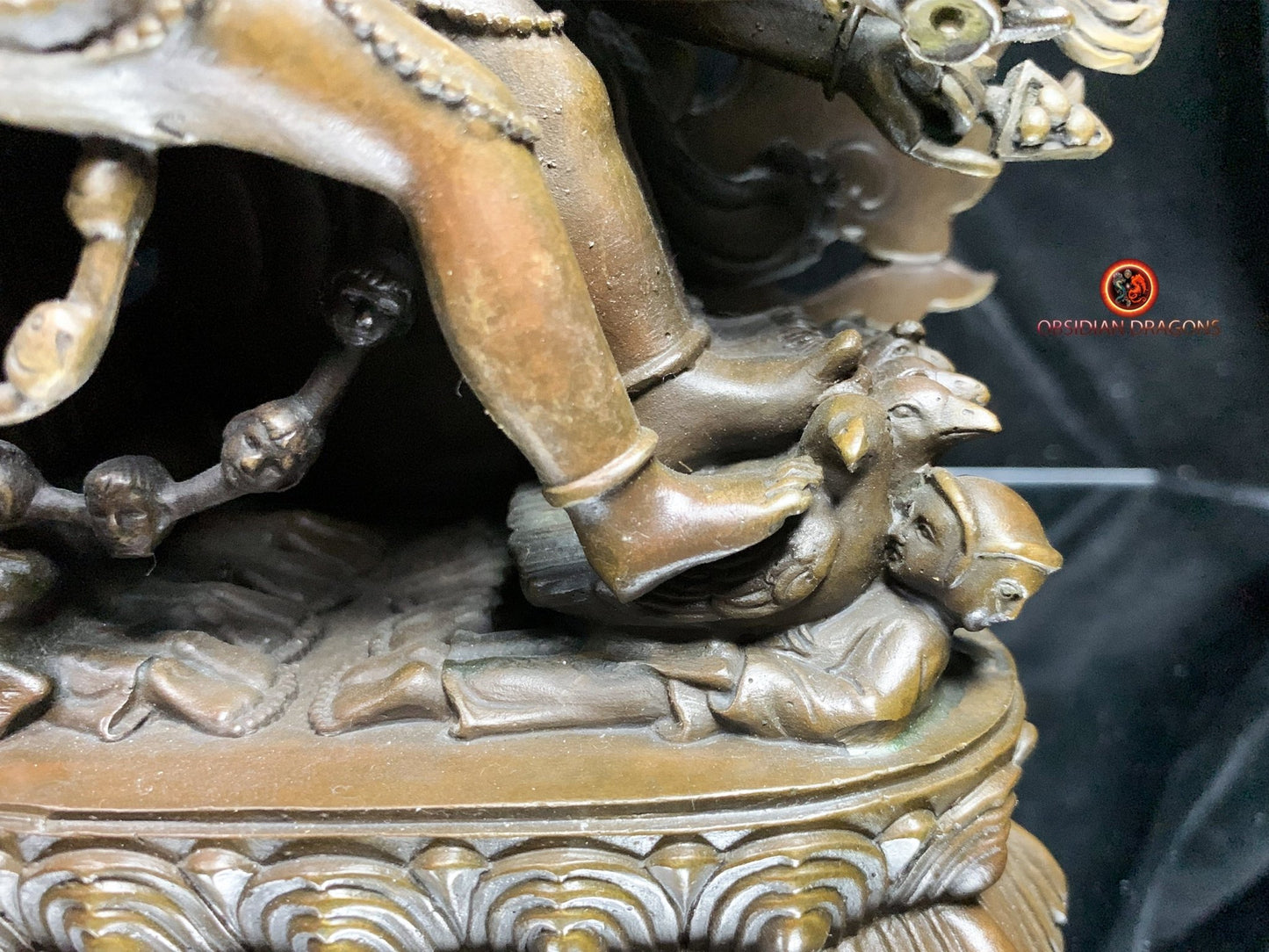
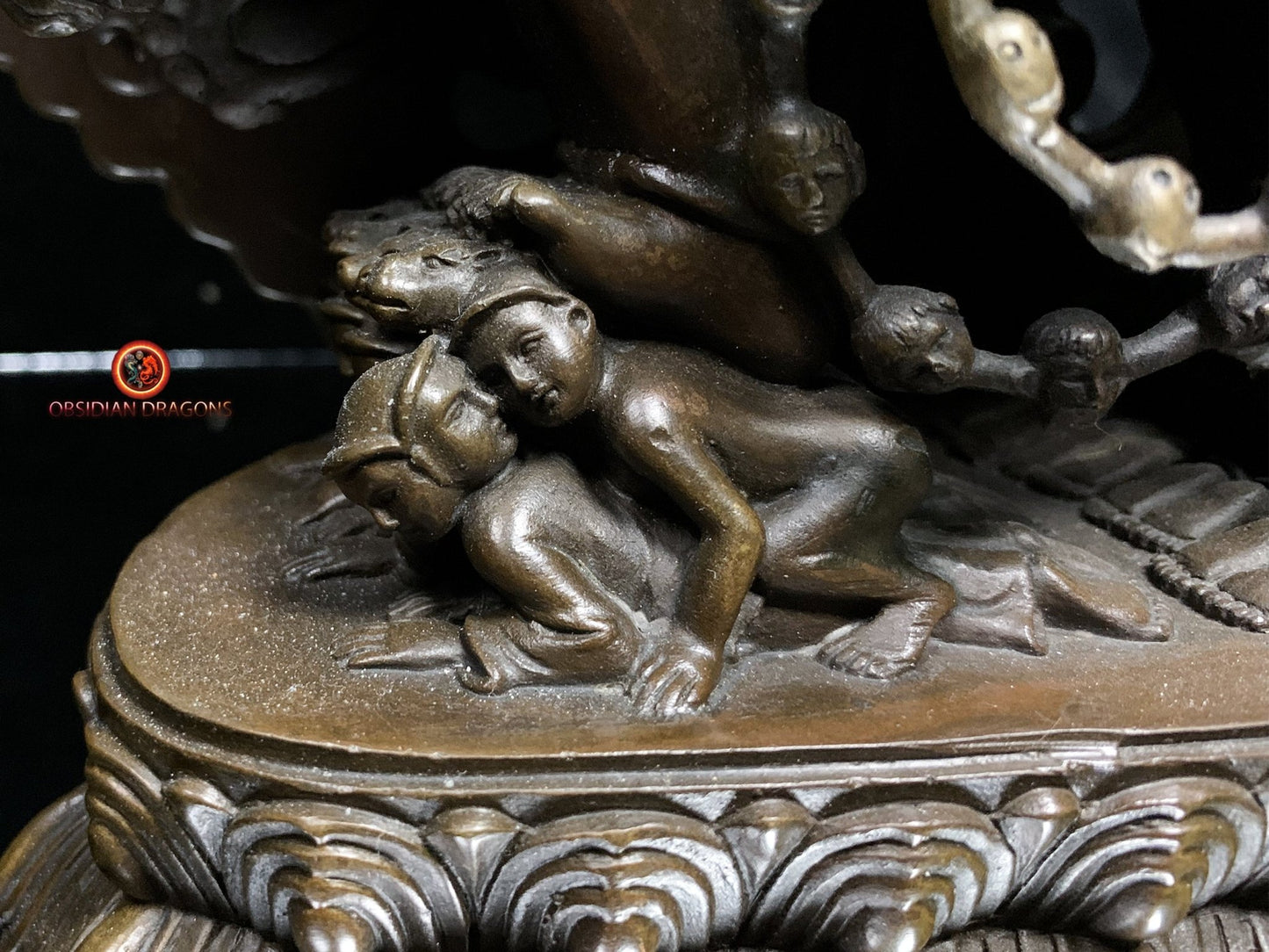
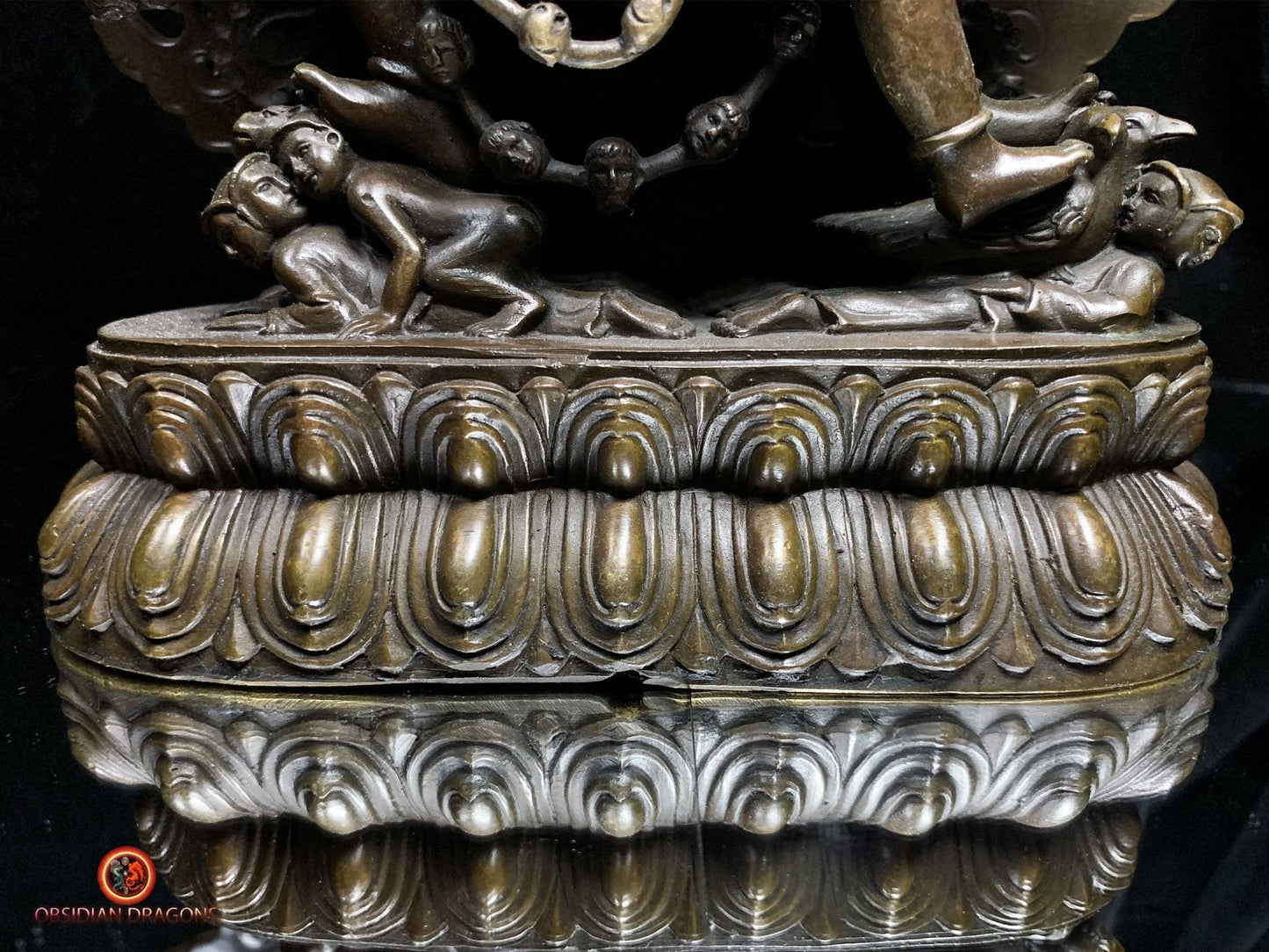
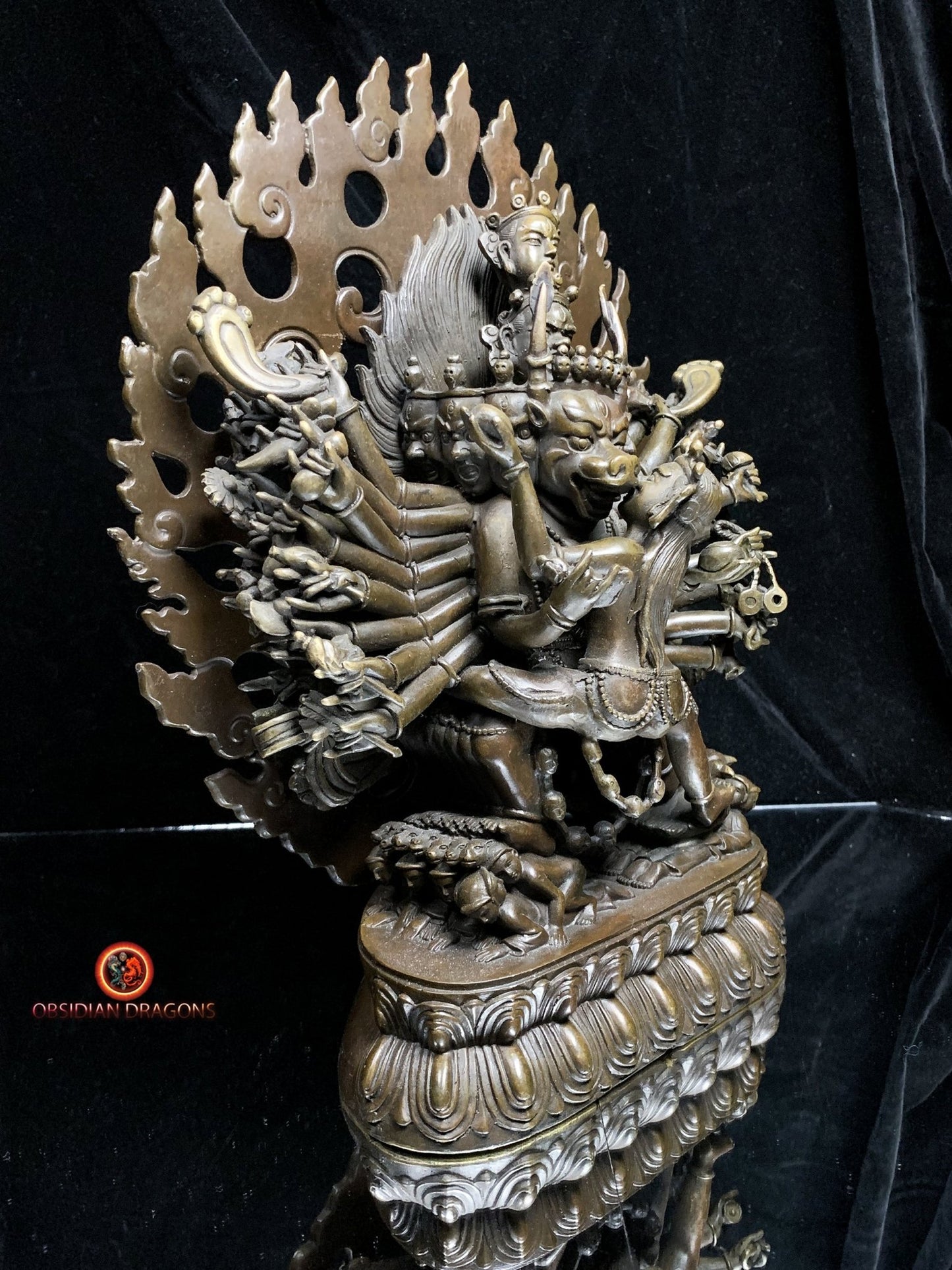

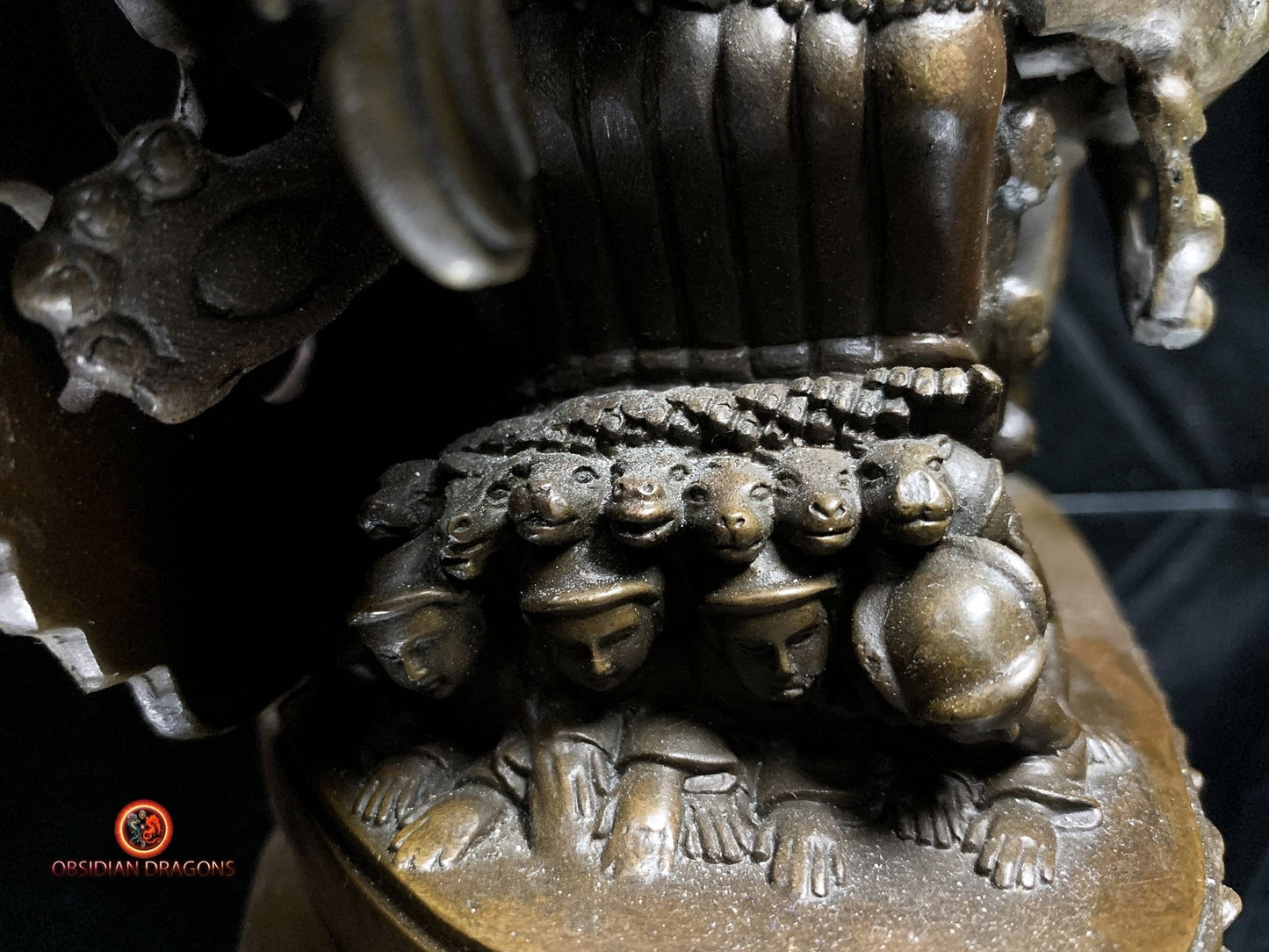
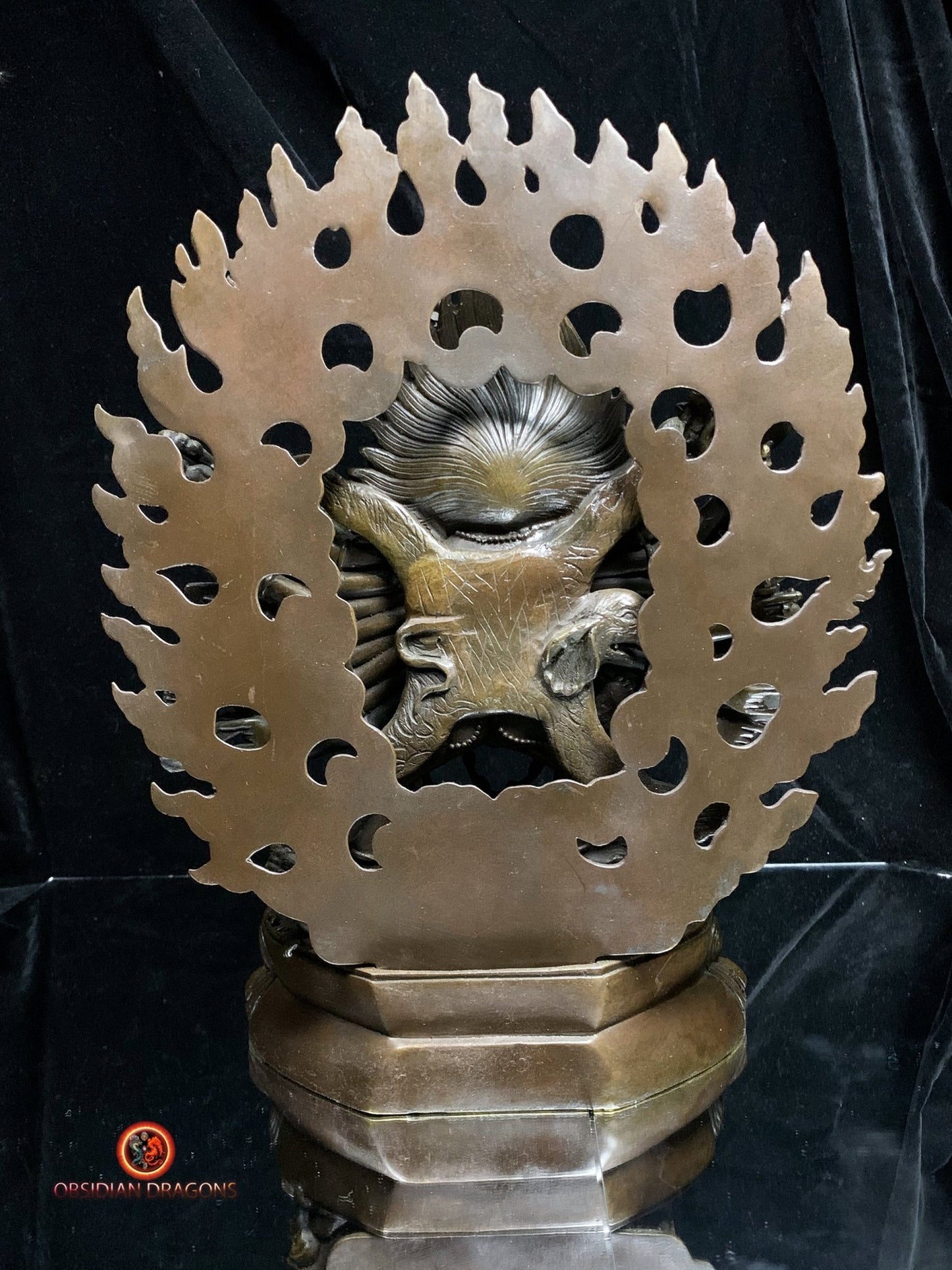
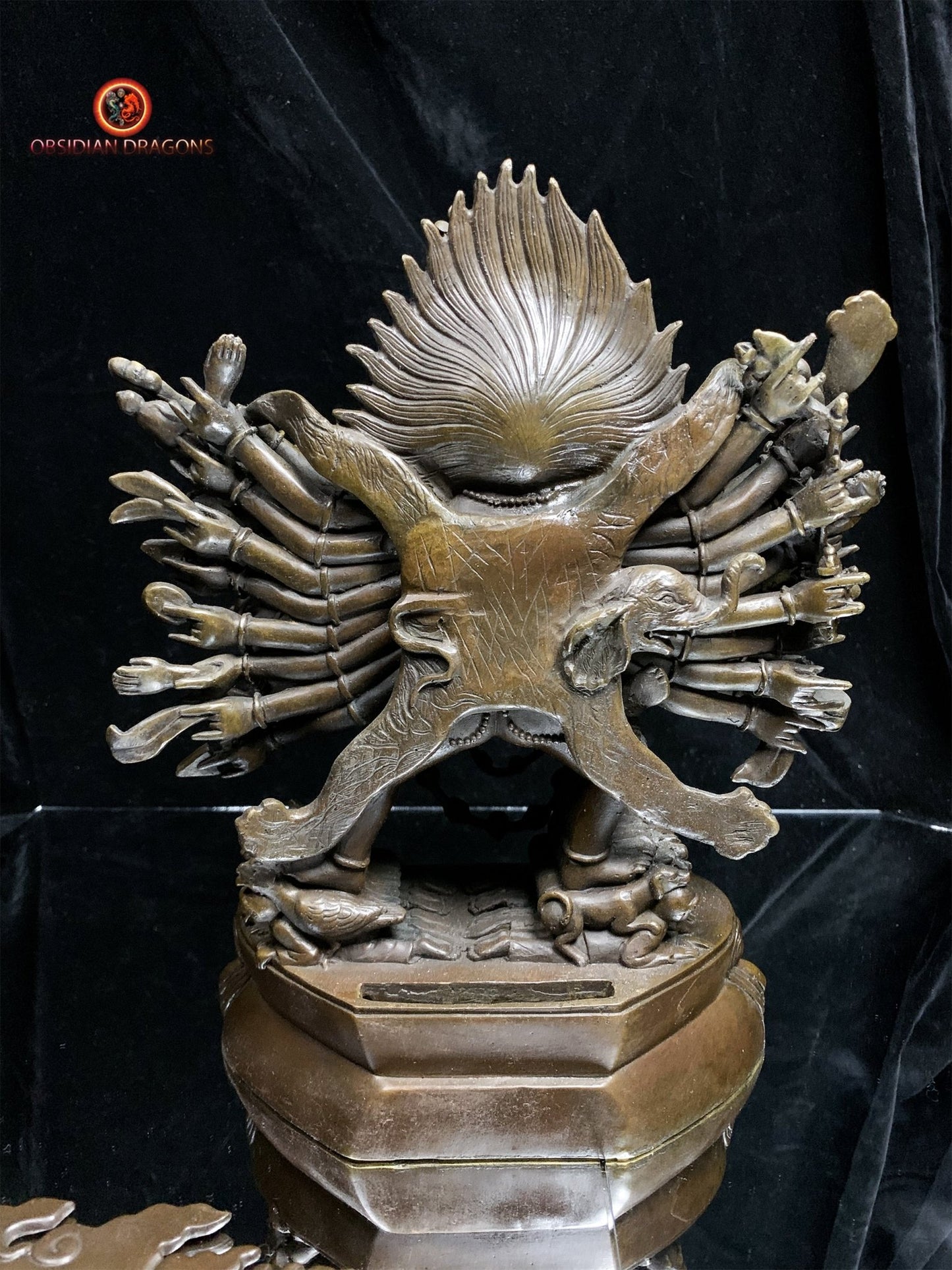
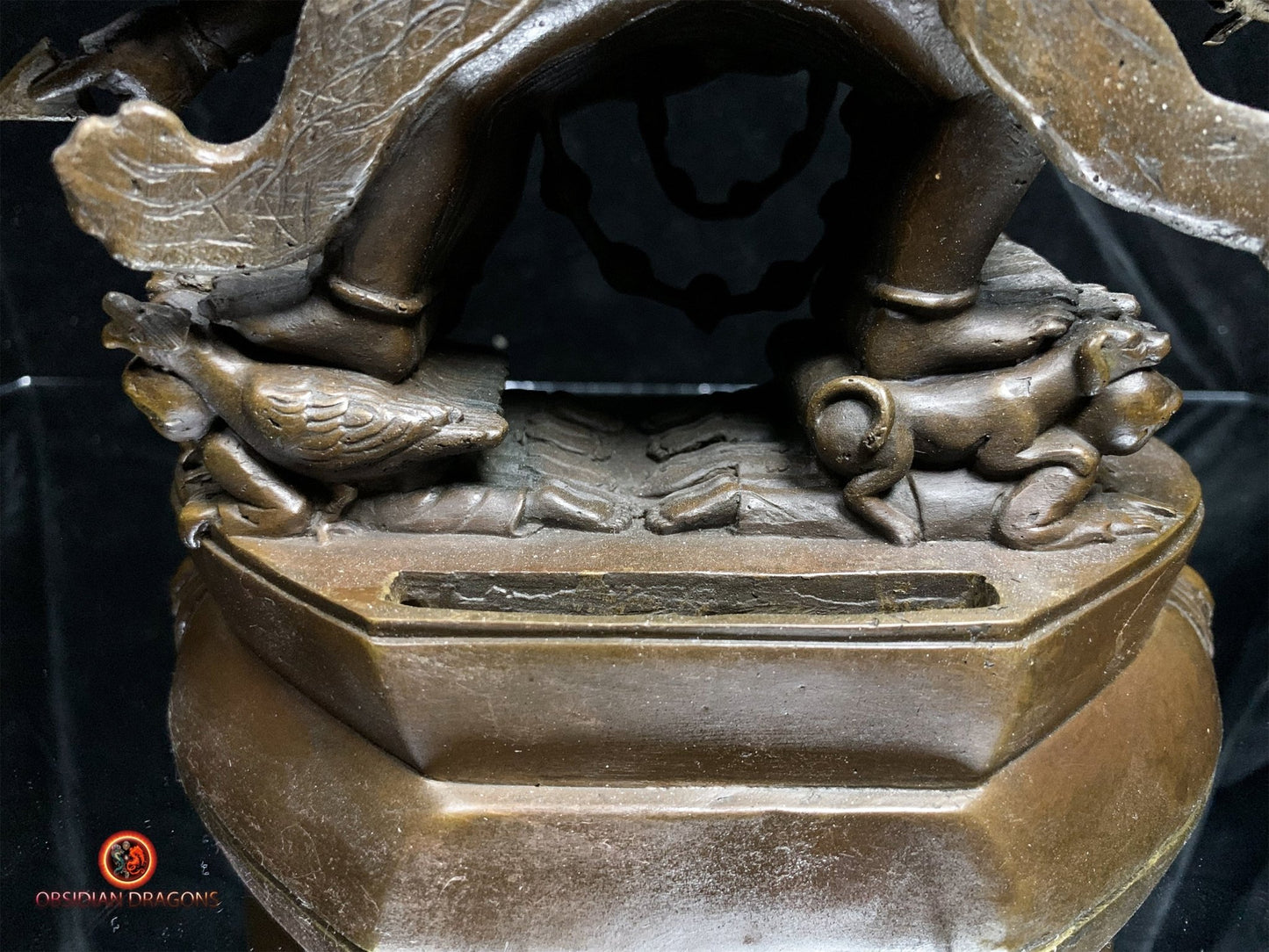
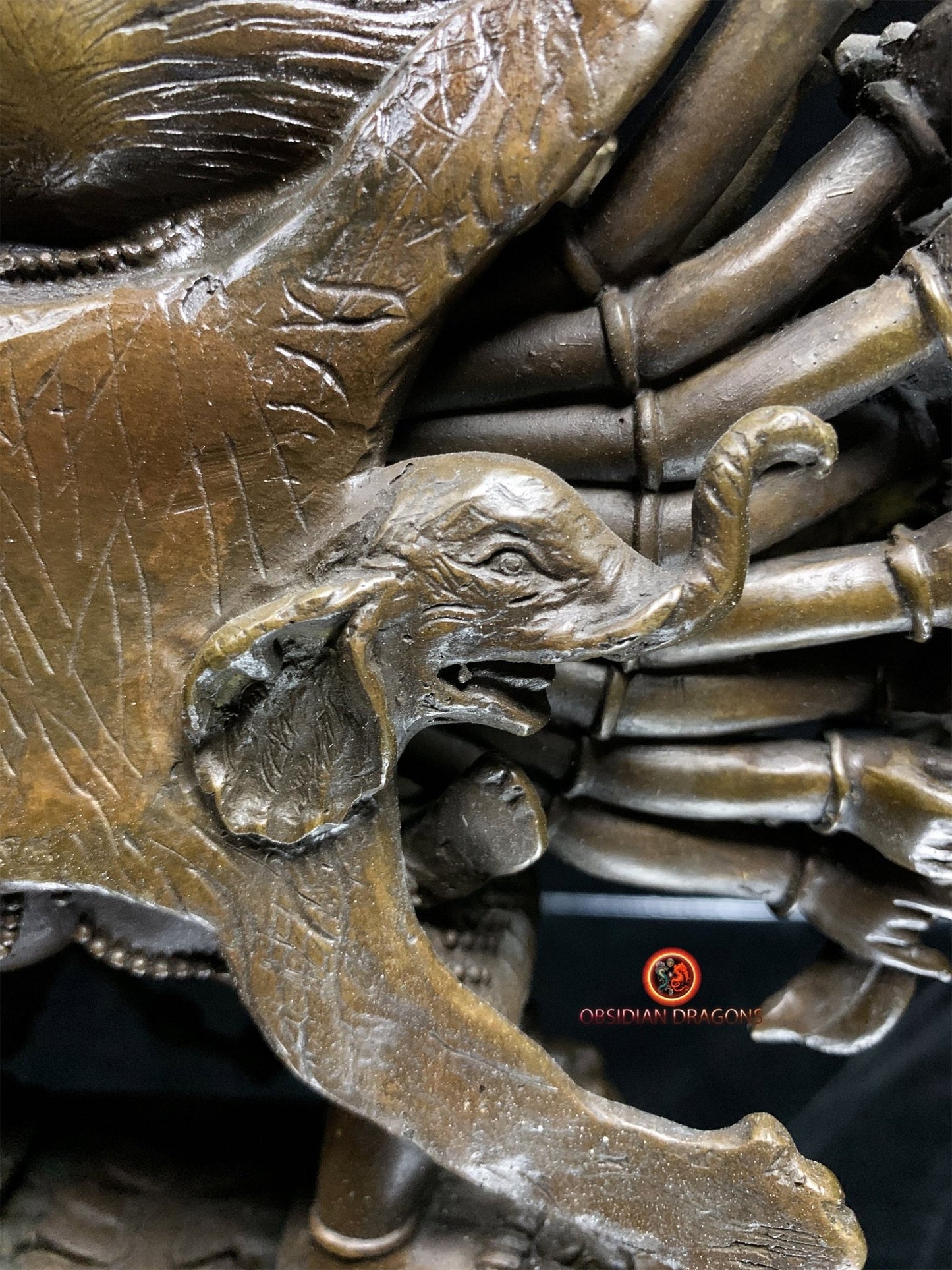
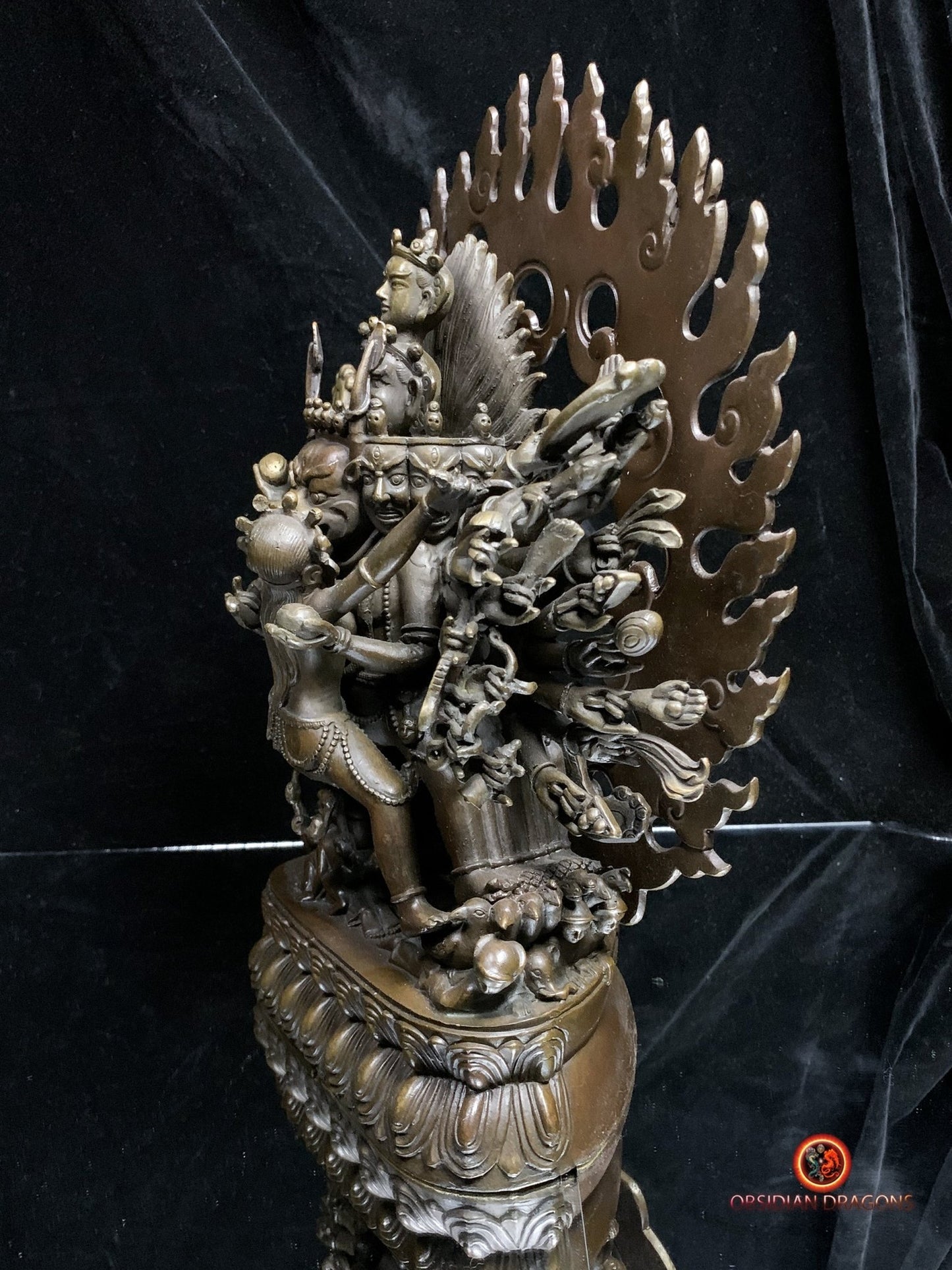
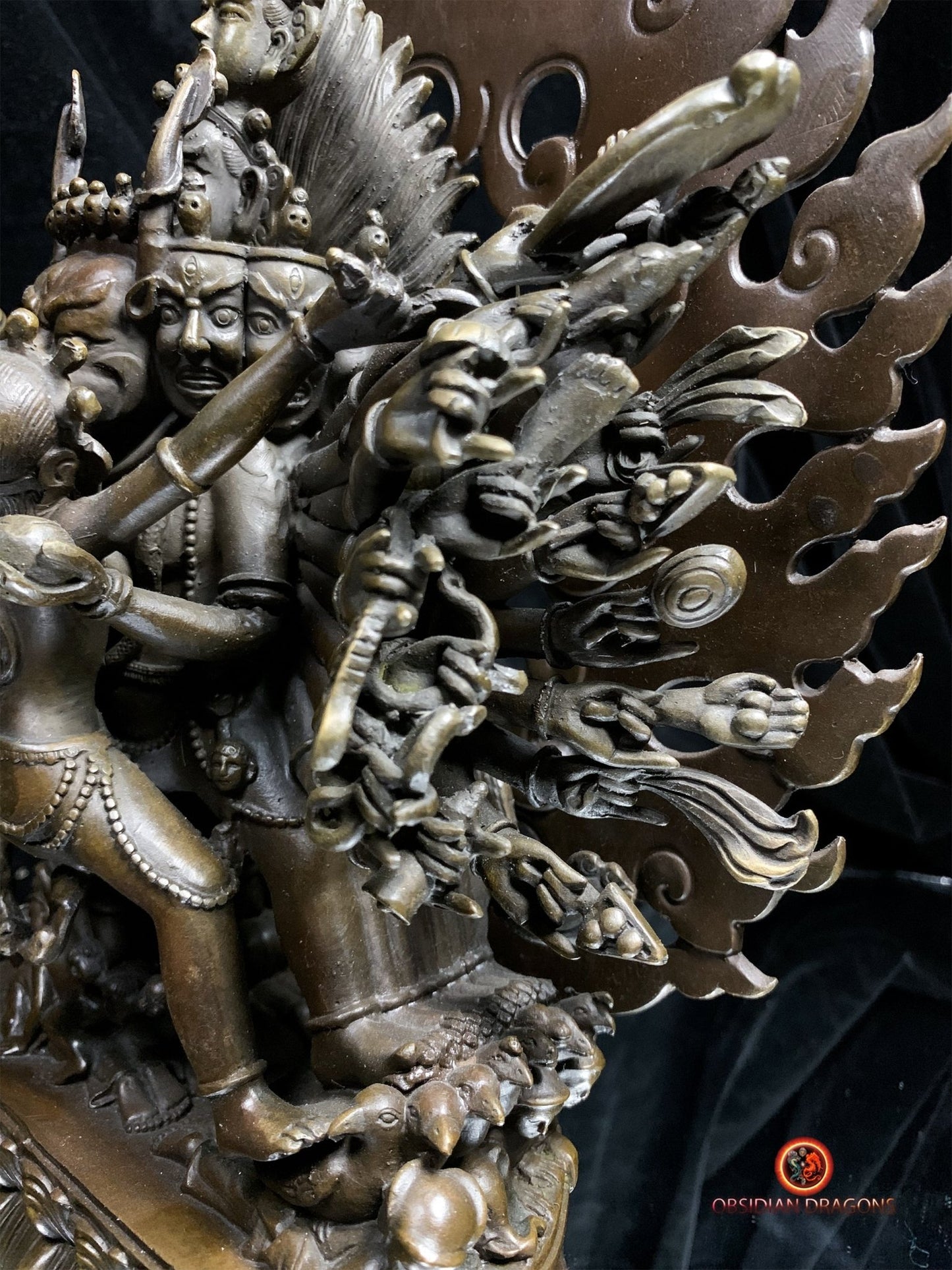
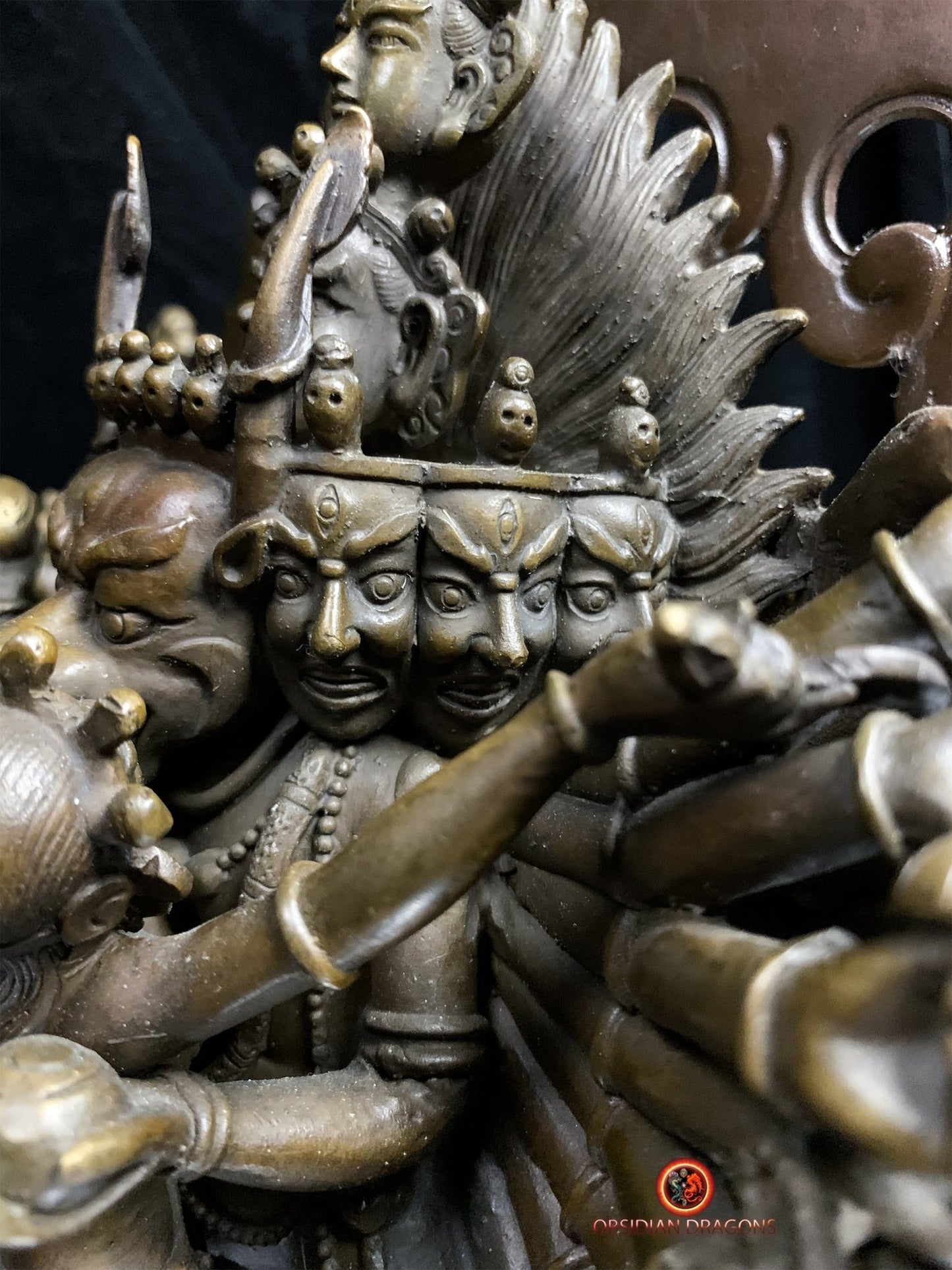

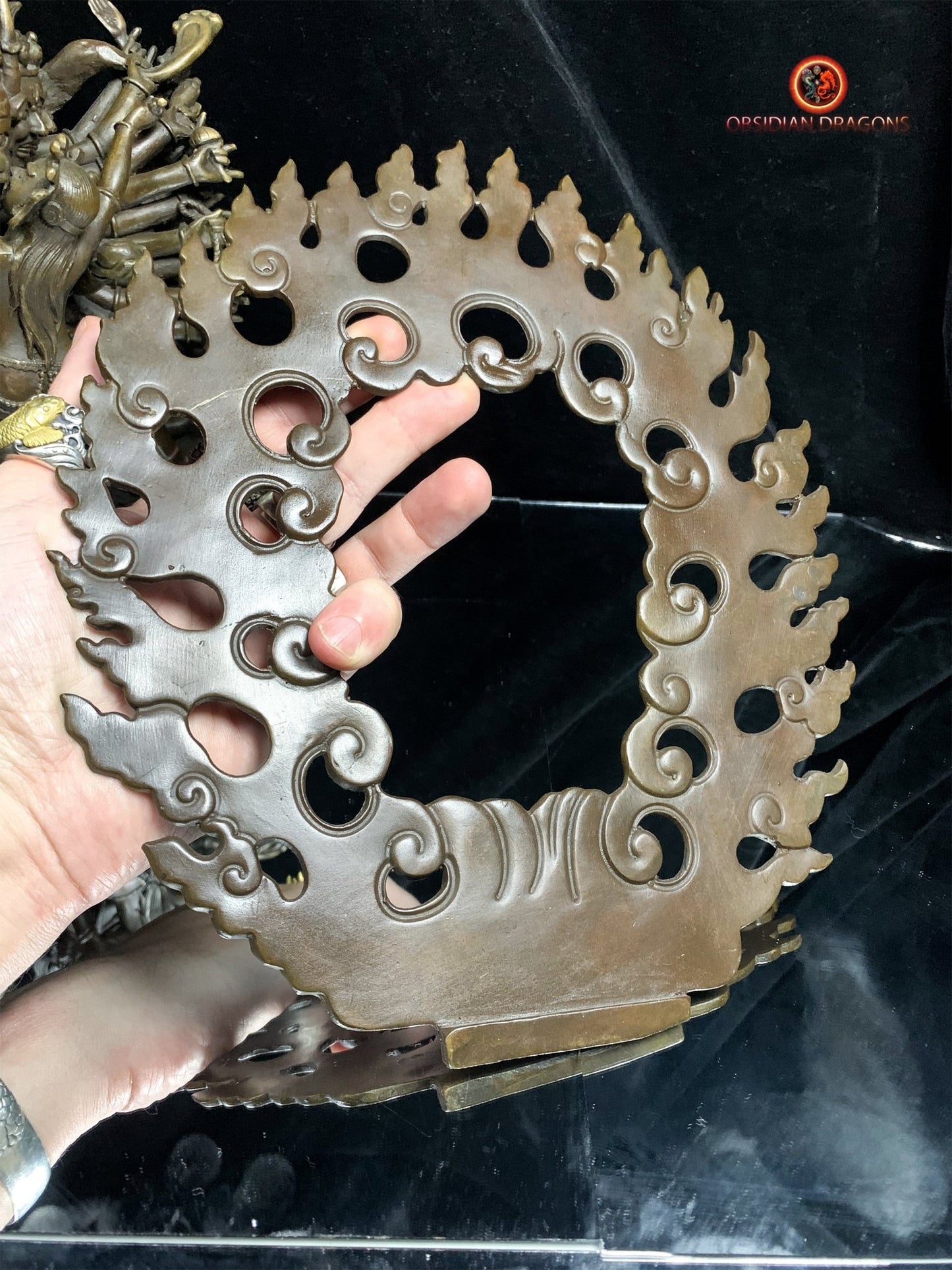

Return conditions for a Zen purchase
We offer you a money back guarantee within 14 days after delivery of your order.
If you are not completely satisfied with your purchase, please contact us to arrange a return of the product and a refund.
Except for returns, shipping is free on all orders.
Multi-column
Button text-
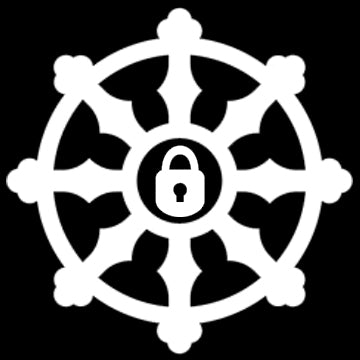
100% secure payment
3 times interest-free option with Scalapay
-
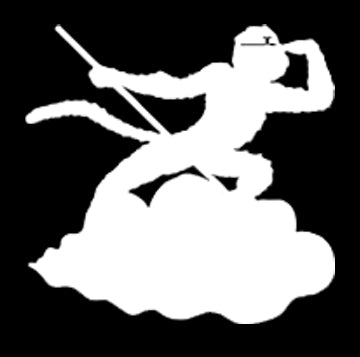
Free delivery in France and internationally
14 days money back guarantee after delivery (see our conditions of sale)
-
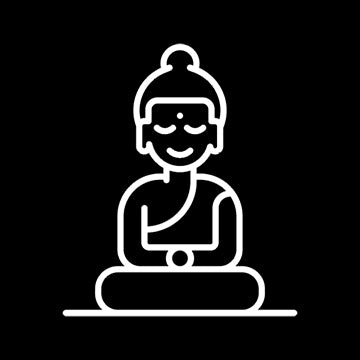
Column
Excellent customer service
Live chat
Whatsapp +33674049312
Let customers speak for us
from 917 reviews4eme pièce que j'achète et encore une fois, jamais déçue de l'unicité et de l'originalité. Coup de cœur pour ce bracelet en magnifiques molaires de mammouth, charge de vie et d'histoire. Attention pour un tout petit poignet de fille comme le mien cela peut être trop grand. N'hésitez pas à poser la question à Jeremy sur les tailles, il répond toujours et il est très réactif.

Déjà j’au été très impressionné par la qualité du site web pour tout chercheur de vérité mais également pour la disponibilité de Jérôme qui a su dépasser mes plus grandes attentes pour la commande sur mesure d’un mala en Obsidienne Œil Céleste – Dragon & Bagua Feng Shui. Gràce à ce puissant talisman je peux désormais continuer ma route sereinement. Un très grand merci sincèrement.

magnifique, puissant et apaisant, il m'aide à garder mon calme je le trouve absolument parfait!

J'ai eu l'occasion de rencontrer Jérémy sur Paris avant l'achat...très bon contact avec lui ..il sait de quoi il parle...je suis revenu vers lui pour l'achat de cette magnifique statue...elle a été emballee avec beaucoup de soin pour une expédition de chine... vraiment très satisfait de cet achat..merci

Pendentif dragon en obsidienne œil céleste - Symbole spirituel

Le collier est superbe, et ce pendentif magnifique, ses détails! et l'odeur du bois de santal que c'est agréable! Qualité extra! Contact excellent avec Jérémy, merci beaucoup pour votre gentillesse! Quelle qualité, vivement le mala !

L'objet est très joli et malgré que je ne sois pas un spécialiste, je trouve que le crystal est beau. Il n'est pas parfait et cela me rassure sur la qualité du produit qui est sensé être naturel donc imparfait.
Très bien emballé et en plus housse de rangement offerte.
MERCI

J’ai commandé un crâne de dragon, il est super beau et très puissant. Je l’adore 😍 Et l’envoi a été très rapide 🤗 merci 🙏🏻

bracelet puissant, je suis content de mon achat

Cet artisan est gémologue, il travaille avec des artisans qui sont des vrais artistes, je suis bluffé par la qualité des ouvrages sur l’argent et sa qualité. Quand à la qualité des pierres pas besoin d’être gémologue pour voir la qualité exceptionnelle des pierres, encore une fois le travail de sculpture est exceptionnel.
Mon mala traditionnel est une pure merveille dans la tradition originelle. Le ghau est une merveille qui me comble.
Bref que dire de plus :). Allez sur son site.
PS : vendeur qui connait son métier et les traditions bouddhistes ce qui est un plus en plus :)

Ce crâne est un Etre de Lumière. Attirant , inspirant , "parlant".
Il est un Ami qui tire mes pensées vers le Haut.
Ses énergies vibrent à des fréquences élevées. Il est puissant dans la douceur.
Un crâne de Dragon m'assite également. Merveilleux !

Très beaux bracelet et très puissants

Magnifique crâne givré de l'Himalaya.

cette chevalière est tres bien réalisé, avec beaucoup de détails, je suis heureux de l'avoir

